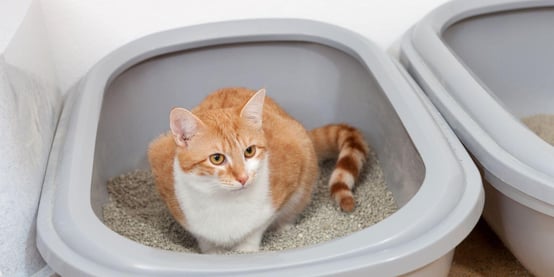There’s nothing quite like coming home at the end of the day to a wet nose and wagging tail, but if you live in an apartment, choosing the right dog breed is essential. The reality is that no matter how cute and cuddly a prospective canine companion may be, not all dogs are suited to apartment living.
Choosing the Best Dog Breeds for Apartment Living
Welcoming a new fur baby into your heart and home is an incredible experience. However, not every dog is going to thrive in every environment. That’s why it’s important to be judicious and do your research before bringing your new puppy pal into your apartment. After all, it’s a lifelong commitment, and your job is to give your new pet the happiest and healthiest life possible. That starts with finding the right dog for your apartment home and family lifestyle.
This article describes some of the best breeds for apartment living. However, you should bear in mind that there is a lot of variation even within breeds, especially for temperament. And that’s why you will want to spend time getting to know your new four-legged friend. Get a feel for their individual personality and style. Consult with the breeder, rescuer, veterinarian – anyone who may be familiar with your pup’s background and personality.
Breed Size, Activity Level, and Noisiness
Before bringing a new puppy or canine companion into your apartment home, there are some general factors to consider. Things like breed size, activity level, and vocality are crucial considerations. Some breeds simply need lots of physical activity and plenty of outdoor space to romp in. Others will be quite content with just a leisurely stroll around the neighbourhood once or twice a day.
Likewise, some breeds tend to be more vocal, while others would hardly make a peep even if a child was tugging on their fur a little too hard. So, if you’re an apartment-dweller and you don’t want to become a pariah with the neighbours, it’s a good idea to avoid breeds prone to excessive barking.
And then there’s the matter of size. Yes, it’s true that smaller breeds tend to do better in apartments than larger ones. But there are exceptions, as will be seen below. Larger breeds with lower energy levels can be just as happy in a two-bedroom flat in the heart of the city as they would be on a 20-acre farm with endless vistas to explore.
So, with the above in mind, let’s turn to some of the best dog breeds for apartment living!
Maltese: Cute and Cuddly Companions
As one of the smallest of the toy breeds, clocking in at 10 lbs on average, the cute and cuddly Maltese is ideal for apartment life. Maltese are intelligent, playful, and very friendly. And with their silky white coat, liquid brown eyes, and perpetually happy disposition, they are perfect for seniors and persons with disabilities, which is why they’re a preferred breed for therapy dogs.
While the Maltese generally retain their puppy playfulness all their lives, they don’t need a great deal of space to roam. A short stroll down the block or a play session on the living room floor should satisfy the easy-going Maltese quite nicely.
Because of their small size, though, Maltese are generally not well-suited to homes with larger dogs or small children. In addition, because Maltese are so attached to their human companions, they usually don’t like to be left alone for long periods of time. Finally, Maltese are not generally prone to barking, but if they are startled by a noise in the night, you may expect an alarm cry that far surpasses their small stature!
Bulldogs: Happy Huggers
Whether you’re drawn to the French or English variety, you really can’t go wrong with a Bulldog. Bullies are smart, adaptable, and loving breeds that tend to be a bit less active.
A leisurely stroll down the block followed by lots of snuggle time with their human should be all your Bullie needs. In fact, the short muzzle characteristic of the breed leaves them vulnerable to overheating. And that means that, for the most part, Bullies are happier and healthier inside your air-conditioned apartment than outside in a sunny backyard for long periods of time.
Bulldogs’ calm, even temperaments make them perfect for pretty much any family and lifestyle. Their muscular build means they can generally handle a bit of roughhousing with small children or larger dogs, while their innate sweetness makes them terrific companions for the elderly and those with disabilities. Bullies also tend to be fairly quiet, so excessive barking isn’t usually a concern.
Bichon Frise: Beautiful Inside and Out
A cousin of the cuddly Maltese, the Bichon Frise is all heart and loveliness. Bichons are charming, highly affectionate little dogs that are ideal for apartment living. Their compact size means they’re not going to need a lot of space to feel at ease. And, provided their human gives them lots of love and attention, they’re just as happy inside as in the great outdoors.
Bichons are typically classified as being “somewhat active,” meaning that a brisk walk and some playtime will be all your pupper needs to be satisfied. Bichons aren’t quite as stocky as Bullies but they’re also not as small or delicate as their cousin, the Maltese. So they may require a bit more supervision around larger dogs and small children.
One word of caution, though: Bichons aren’t just alert and playful. They’re also surprisingly fast, so when you take your Bichon outside, it’s a good idea to keep them on a harness or confined to fenced areas only.
In general, Bichons aren’t very vocal, but they will bark to alert their human to an unfamiliar sound–or simply because they’re craving a bit of attention from Mama or daddy!
Great Dane: Gentle Grandeur
You might be surprised to find the massive Great Dane on the list of best breeds for apartment living. However, with just a bit of planning, a Great Dane can be a perfect flatmate. Danes are gentle, intelligent, and highly adaptable.
So as long as you give them a chance to get out and stretch those gorgeous long legs two or three times a day, your Dane will be perfectly content in your apartment. Their calm and loving temperament means that their happy place is probably going to be when they’re curled up beside you on the couch. Those 2-3 daily walks are essential, though, not only for your Danes’ mental health but also for their physical wellbeing. For instance, Danes are particularly vulnerable to bloat, which can be life-threatening. Regular exercise can help prevent this common, painful, and dangerous ailment.
Because of Danes’ intelligence, trainability, and innate patience, they are generally good with children. However, their massive size and weight may be a bit difficult for seniors or those with disabilities to handle, at least not without significant training. Danes aren’t particularly noisy and aren’t prone to excessive barking, but these gentle giants can certainly raise a ruckus when they’re in a play or defence mode.
Greyhound: Sweetness and Grace
The Greyhound is another pooch you might be surprised to find on this list, but don’t let their lithe build and pro-athlete reputation fool you. To be sure, Greyhounds may be the Usain Bolt of the canine world, but they’re often just as happy cuddled up beside their human as they are on a racetrack.
Greyhounds, not surprisingly, need regular exercise, including the opportunity to run full-out in safely fenced-in areas. But the amount of exercise they need is likely less than you would expect for such an athletic breed. One or two good play periods a day should suffice. After which you can indulge your Greyhound’s sweet and loving disposition with lots of snuggles as you watch television or read a book.
Greyhounds aren’t prone to excessive barking and so noise is not generally a concern. However, Greyhounds can be a bit more difficult to train than some breeds given their sensitive nature and independent spirit. They require a light, gentle, but consistent touch during training and they need to be socialized at a young age to safely interact with small children and animals. Despite these considerations, though, there are few better apartment companions than the sweet, loving, and graceful Greyhound.
Final Considerations When Choosing Your Pup
No matter what breed you ultimately choose, bringing a fur baby into your apartment home is a long-term commitment. Giving your new canine companion the happy, healthy life they deserve requires a significant investment of your time, energy, and financial resources. This makes it a decision that requires both deliberation and proactive planning.
Preparing to bring your new pup home, for instance, should include consideration of how you will pay for veterinary care and pet insurance can be a terrific option. Pet insurance gives you the peace of mind knowing you will be able to provide your beloved puppy pal with the best possible care throughout their life, all while stressing less about the costs.
Get a free quote online or contact Furkin Pet Insurance today to discuss how our policies can help you help your fur baby enjoy a long, healthy, and happy life!



